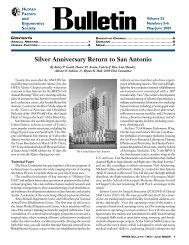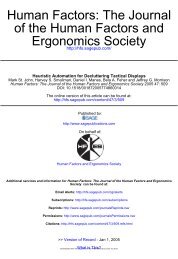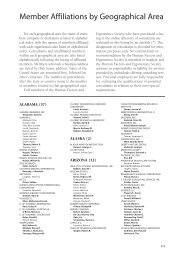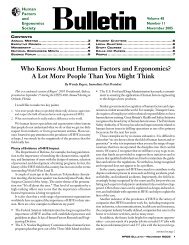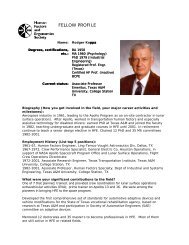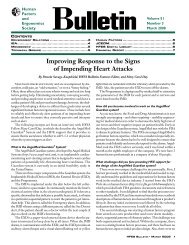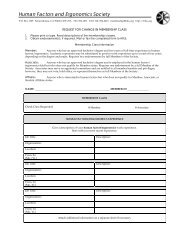Next Generation Air Transportation System Integrated Plan
Next Generation Air Transportation System Integrated Plan
Next Generation Air Transportation System Integrated Plan
You also want an ePaper? Increase the reach of your titles
YUMPU automatically turns print PDFs into web optimized ePapers that Google loves.
1.3 Global Leadership<br />
The United States has been a leader in aviation since its very<br />
inception 100 years ago. That leadership is a result of the energy<br />
and creativity of America’s private sector which has supported our<br />
economic health through developing a highly skilled workforce,<br />
encouraging technical innovations, and producing aviation products<br />
used around the globe. The private sector has also been supported<br />
by the U.S. leadership in establishing the institutional framework<br />
and standards necessary for this sector. Unless we establish a vision<br />
and framework that encourages and enables further private sector<br />
innovation, our competitiveness in aviation is likely to diminish.<br />
Loss of competitiveness in this area would mean a loss in highpaying<br />
jobs and a weakening of our economic strength through a<br />
shift in the balance of trade. We cannot afford to be a second-tier<br />
aviation supplier in the second century of aviation.<br />
Just as in the domestic arena, the government should avoid picking<br />
winners and losers in the international economy. However, it does<br />
accept responsibility for ensuring that international competition<br />
provides U.S. firms with a fair opportunity to compete for markets.<br />
The air transportation and aerospace markets, in particular, are<br />
highly influenced by international agreements that set standards<br />
and provide for market access. In some cases, the air transportation<br />
system and key suppliers are owned or financed by governments in<br />
other countries. Federal research and institutional arrangements<br />
to support transformation will assist U.S. negotiators as they<br />
strive to provide for a fair and equitable international competitive<br />
environment for U.S. firms. As the U.S. “Hushkit” controversy with<br />
Europe demonstrated, the ability of U.S. firms to operate overseas is<br />
closely interconnected with trade policy, international standards and<br />
our ability to generate technological advances to global problems.<br />
The economic stake of maintaining leadership is high. Civil aviation<br />
products and services generate a significant surplus for U.S. trade<br />
accounts and contribute to the $100 billion a year in tourism from<br />
abroad. <strong>Air</strong> transportation has spawned a highly technical workforce.<br />
Aviation technologies, products, and services underpin the advanced<br />
capabilities of our national defense and homeland security. 7<br />
Congress, commissions, state authorities, and others have all<br />
recognized that government and industry need to take a different<br />
approach to the business of aviation. If the United States is going to<br />
be ready for the changes that are to come in the next two decades,<br />
we need an integrated plan—one where government creates a stable<br />
institutional framework that encourages the creativity of the private<br />
sector.<br />
7 PL 108-176 Sec 4 (1-4)<br />
Joint <strong>Plan</strong>ning & Development Office 05




